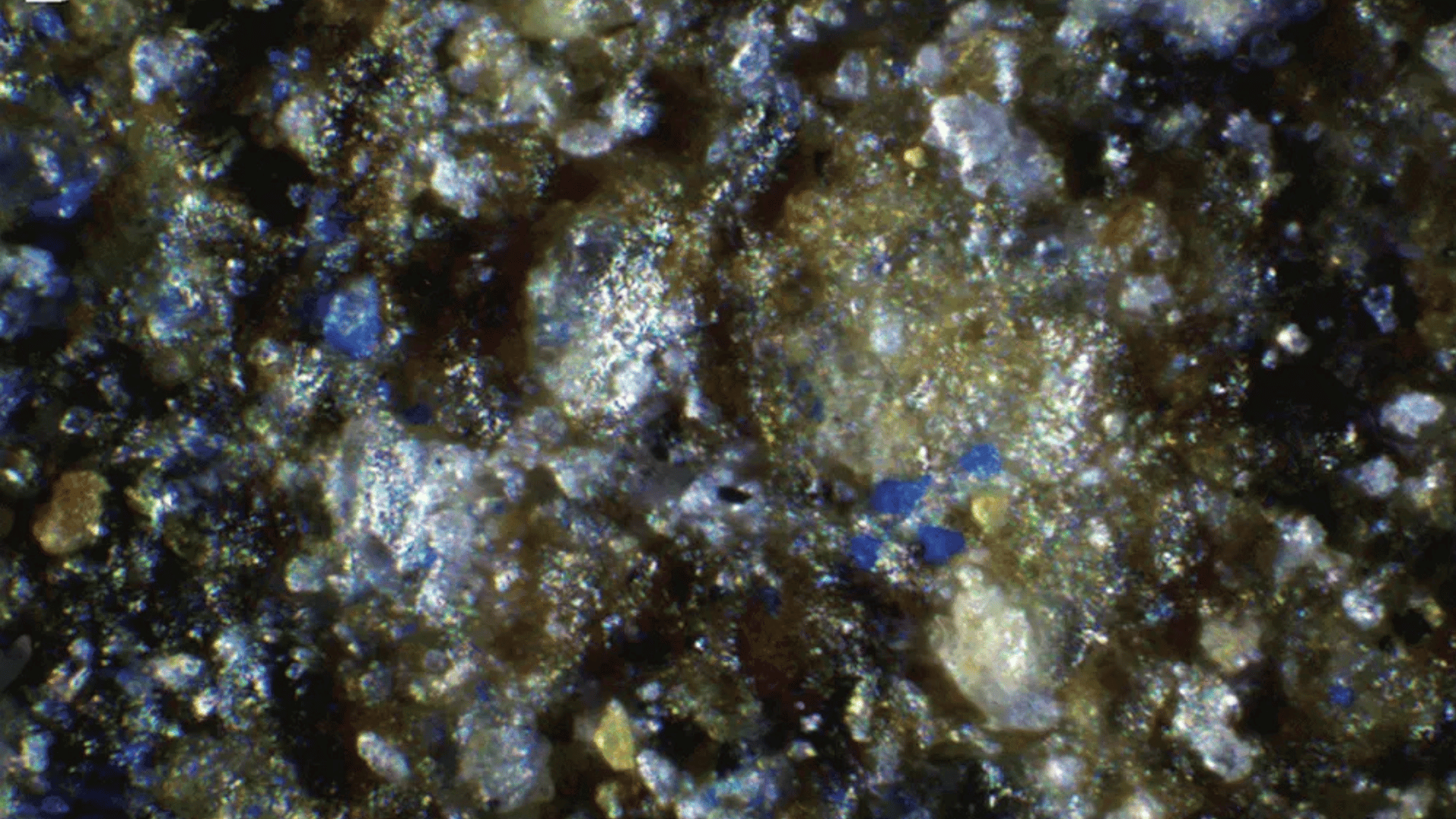Though cave paintings from Paleolithic ancestors contain an abundance of red, yellow, and black pigments, blue and green shades are almost nonexistent. However, researchers have just uncovered Europe’s oldest example of blue pigment, which is estimated to be approximately 13,000 years old.
Europe’s Oldest Blue Pigment

This has stumped archaeologists, as the absence of these pigments can’t be explained through technological knowledge in extracting pigments from minerals. New research from a team at Aarhus University in Denmark suggests that blue may have existed within the color palette of the Paleolithic world, but its uses, such as body decoration or dyeing clothing, have disappeared from the archaeological record.
The new discovery originates from a piece of sandstone discovered on a riverbank outside Frankfurt, Germany, in the late 1970s. For decades, it has been on display at the Mülheim City Museum, but after re-examining the artifacts from that excavation, researchers noted tiny dots of blue residue on the stone’s surface.
Those dots have now been identified as coming from the vivid blue mineral pigment azurite.
“This novel documentation of blue pigment use during the Upper Paleolithic has significant implications for understanding artistic behaviors during this period,” lead author Izzy Wisher wrote in a paper published in Antiquity. “It encourages a deeper consideration for why blue pigments have not been previously identified within Upper Paleolithic contexts.”
Researchers used micro- and X-ray fluorescence to identify the pigment. They also used a combination of scientific analyses to find the traces from azurite, a deep-blue copper carbonate mineral.
Since the dots were only found on the concave parts of the stone, researchers believe it wasn’t a natural formation. The shape of the stone is bowl-like, making it an ideal surface for processing azurite into a powder and mixing it with binding materials to create paint.
“We suggest that this blue pigment was used for activities that are invisible in the archaeological record,” Wisher wrote. “It is possible that the use of azurite was therefore restricted to activities such as body decoration or dyeing organic materials used in clothing.”







